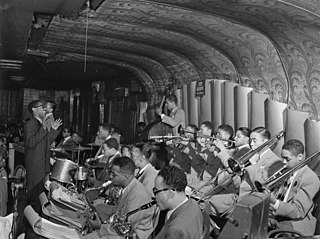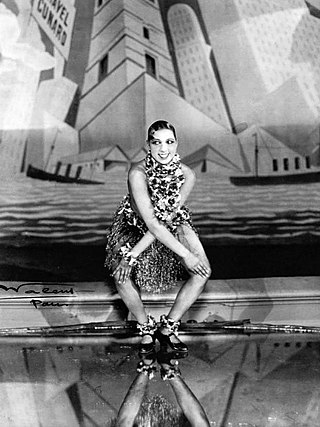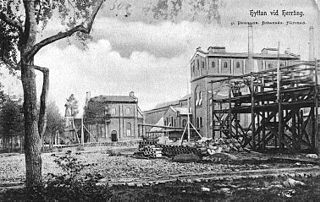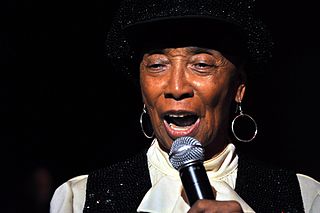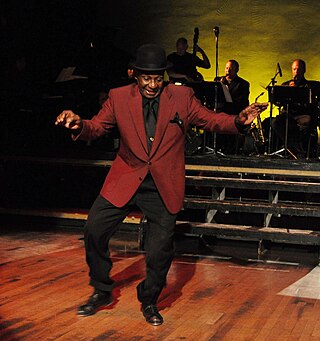History
Anders Lind began studying at the Royal Institute of Technology (KTH) in Stockholm, Sweden in 1978 and became interested in swing dance as a student. He became a member of the Swedish Swing Society (SSS, formed in 1978), a dance club that originally focused on competition and show. The Swedish Swing Society initially recruited dancers from Lasse Kühlers dance school. So when Lennart Westerlund started to dance at Lasse Kühlers dance school in 1980, he was recruited into the Swedish Swing Society in 1981, where he met Anders Lind. Lennart Westerlund, Catrine Lunggren, Anders Lind, and Lena Ramberg started to dance together in a small performance group as a part of the Swedish Swing Society in 1983.
Anders Lind became interested in searching for the history of the dance and in autumn 1983, he found a copy of "Jazz Dance: The Story of American Vernacular Dance" by Marshall and Jean Stearns in an unknown library in Dansmuseet (dance museum). Excited about the discovery, he copied three chapters of the book and handed them out to his fellow SSS members. Prior to finding "Jazz Dance", everyone believed that Jitterbug was a dance that originated from the 1940s. They learned from the book that Jitterbug was originally called Lindy Hop and originated in Harlem, NY during the end of the 1920s.
At the age of 15, Eddie Jansson and Eva Lagerqvist started dancing at Lasse Kühlers dance school, where they met each other in 1983. After one year at the dance school, they joined the Swedish Swing Society. Eddie and Eva and another couple formed a group called Dance Freaks in spring 1984. Dance Freaks performed together one time before splitting up.
"Jazz Dance" listed several films that included Lindy Hop sequences. When A Day at the Races was shown in a theater in Stockholm, Anders and Lennart went to watch the movie. They found the dance sequences so exciting that they returned with a video camera to record all of the dance scenes. When Hellzapoppin' was shown at the KTH student theatre, they were in awe by the dancing in the film. The speed, acrobatics, and skill of the dancers was like nothing they had ever seen before. They started discussing a trip to New York City to find someone who could teach them how to dance the same way.
In April 1984, Anders Lind, Lennert Westerlund, and Henning Sörensen (Secretary for the Swedish Swing Society) travelled to New York City seeking Al Minns, a surviving member of Whitey's Lindy Hoppers that Anders had found in "Jazz Dance". While in Stockholm, Anders Lind had found a copy of the New York City yellow pages and torn out the pages listing dance schools. When they arrived in NYC, Anders Lind decided to call the dance schools that taught Lindy Hop. As luck would have it, the first dance school he called also happened to be the one that Al Minns taught it. They ended up meeting Al Minns two days later at a nightclub.
Count Basie had just died and his band members as well as the artists and dancers that had worked with him had planned a memorial dance in his honor at The Red Parrot, a nightclub in New York City. Anders Lind learned about the event and the three Swedes showed up at the nightclub and found Al Minns dancing Lindy Hop there. Al Minns had started teaching at Sandra Cameron Dance Center in 1982 [1] and invited them to his dance class. Anders Lind also took the opportunity to take some classes with Norma Miller. When they returned to Sweden, Henning recommended to the board members of the Swedish Swing Society to invite Al Minns to Stockholm to teach and give lectures. Despite having a fear of flying, Al Minns traveled to Sweden in October 1984 for a 5-day workshop and brought a different approach to the dance with him. He told them to "Forget counting, just listen!".
During the summer of 1984, the Swedish Swing Society arranged for the SSS performance group to perform for a few shows during the Stockholm Jazz Festival. The group asked Eddie and Eva to join them and for their first performance, the three couples performed on the main stage in front of 2000 people while accompanied live by The Harlem Blues & Jazz Band. The performances were very successful and afterwards the three couples considered working together in the future, perhaps at a professional level.
After months of discussion, Lennart Westerlund, Anders Lind, Eddie Jansson, Catrine Ljunggren, Lena Ramberg and Eva Lagerqvist decided to form a dance company in the summer of 1985 when The Harlem Blues & Jazz Band returned to Stockholm. They called themselves The Rhythm Hot Shots. Lennart danced with Catrine, Eddie danced with Eva, and Anders danced with Lena.
Al Minns was invited back to Stockholm in 1985 but he became too ill to travel and died on 24 April 1985. From Al Minns, TRHS learned that Frankie Manning, another surviving member of Whitey's Lindy Hoppers, was also living in New York City. In 1986, Lennart contacted Frankie Manning and in 1987, invited Frankie to Sweden for the first time to work with the dance company. [2]
Before Frankie Manning visited Sweden, The Rhythm Hot Shots had learned how to Lindy Hop by watching old movies in slow motion, such as Hellzapoppin' and A Day at the Races. [2] They would spend four hours watching a film clip on TV just to learn one or two dance steps. They trained together intensively six days a week for several hours. When Frankie Manning visited Sweden in 1987, he stayed for two weeks. At that time, Lena had left the dance company and Ewa Staremo partnered Anders. Since two members of TRHS now had first names that were pronounced the same way – Eva Lagerqvist and Ewa Staremo – Frankie nicknamed Ewa Staremo "W" to quickly differentiate the two. The members of TRHS had regular day jobs so during the first week of Frankie's visit, they met after work at around 16:00 or 17:00 and worked together for four to five hours every night. During the second week, they moved to Herräng, where the Swedish Swing Society had been holding a small dance camp, the Herräng Dance Camp, since 1982. They stayed and practiced in Folkets Hus, the community center in Herräng. [2] During those two weeks, TRHS learned for the first time how to social dance. [2]
In 1989, TRHS became involved with organizing the Herräng Dance Camp with the Swedish Swing Society. They invited Frankie Manning back to Sweden to teach at the dance camp, where he has returned to every year since then. [2]
During the 1990s, TRHS achieved international fame and traveled worldwide to perform and teach at dance camps and workshops in North America, Europe, Asia, and Oceania. The Lindy Hop routine from Hellzapoppin' that they had originally learned in the early 1980s became their hallmark routine that they both performed and taught internationally.
Members of TRHS were the first international instructors to teach Lindy Hop in the former Soviet Union. On 5 April 2000, Lennart Westerlund, Catrine Lunggren, Mattias Lunmark, Åsa Palm, and Hanna Zetterman traveled to St Petersburg, Russia to help introduce Lindy Hop to 15 to 20 Russian dancers during a six-day workshop made possible by a grant from the Swedish Institute. All of the Russian dancers who attended the workshop were then awarded scholarships to attend the Herräng Dance Camp during the summer of 2000. Since then, Lindy Hop has spread to Ukraine and Lithuania.
During the late 1990s/early 2000s, several new members joined TRHS while some older members became inactive and no longer performed or taught classes, but were still members of the dance company. The 2002 Herräng Dance Camp, which TRHS owned, almost ended in bankruptcy. In autumn 2002, The Rhythm Hot Shots dance company was dissolved. The Rhythm Hot Shots Dance & Show Handelsbolag (organisationsnr 969607-7073) was unregistered and in 2004, "The Rhythm Hot Shots" trademark was transferred from The Rhythm Hot Shots Dance & Show Handelsbolag to Lennart Westerlund, Catrine Ljunggren, Eddie Jansson, Ulrika Larsdotter Ericsson, and Eva Lagerqvist Jansson.
The Harlem Hot Shots was formed by active members of TRHS in autumn 2002. Individuals who did not become members of the Harlem Hot Shots – such as Catrine Ljunggren, Eddie Jansson, Eva Lagerqvist Jansson, and Ulrika Larsdotter Ericsson – continue to teach and perform worldwide. For example, in 2006, Catrine Ljunggren helped organize the first international Lindy Hop festival in Buenos Aires, Argentina. The dance camp ran from December 1 to 3 and was so successful that it is planned to be repeated again in December 2007.
Jesses Jassklubb
For several years The Rhythm Hot Shots and later the Harlem Hot Shots ran Jesses Jassklubb (also known as Jesses Jazzklubb, Jesses Jazz Club, Jesse's Jazz Club), a swing dance party held every Wednesday evening during the autumn and spring months. The autumn program was typically from September to early December and the spring program was from late January to late May. From 18:30 to 19:30, there was a drop-in beginner Lindy Hop dance lesson with members of TRHS/HHS and from 20:00 to 23:00 there was a swing/jazz band with DJed music between band breaks.
Jesses Jassklubb was named after its founder, Jens "Jesse" Lindgren (trombone player in Kustbandet and other bands). According to Jens Lindgren, the word "jazz" was spelled with s instead of z because originally it was spelled "jass" in New Orleans, and it helped emphasize the type of music played at the club.
For more than 11 years, Jesses Jassklubb was located at Mariahissen, Pryssgränd 14 in central Stockholm. The Mariahissen location featured a medium-sized hardwood dance floor, minimal food service, and a beautiful view of Gamla stan. On 14 April 2004 Jesses Jassklubb was held at the Mariahissen location for the last time. On 2 June 2004, Jesses Jassklubb reopened again at Hornsgatan 75, Stockholm, the current location of the Chicago Swing Dance Studio. However, the jazz club had to immediately close again since the Hornsgatan location needed additional sound insulation before another dance could be held. When the Wednesday night dances started again in autumn at a different location, the name changed to Zacke's Jazz Corner.
Hornsgatan 75
In March 2004, Lennart Westerlund took over the contract for Hornsgatan 75 in central Stockholm, originally the location of a movie theater by the name of Chicago (from 1907 to mid-1960s). When members of the Harlem Hot Shots took over the locale, they slowly remodeled and created a dance studio with an old-fashioned nightclub atmosphere called Chicago Swing Dance Studio. The locale is 350 m2 with a dance floor that is approximately 180 m2 and includes an office, storage area, kitchen, rest rooms, and a sitting area.
Chicago Swing Dance Studio opened in May 2004 for dance classes in Lindy Hop, tap dance, and classic jazz dance. Other dances that have also been taught include Salsa, Tango Argentino, and West African dance.
The Herräng Dance Camp office moved from Vetegatan 5 to Hornsgatan 75 in the summer of 2004.
When the HHS attempted to move Jesses Jassklubb to Hornsgatan 75 on 2 June 2004, it became apparent that additional sound insulation was needed before more dances could be held there. During the summer and autumn of 2004, the HHS increased the sound insulation, added ventilation, and redesigned the interior of the locale. Jesses Jassklubb, which had during autumn 2004 become known as Zacke's Jazz Corner, moved back to Hornsgatan 75 on 16 February 2005.

